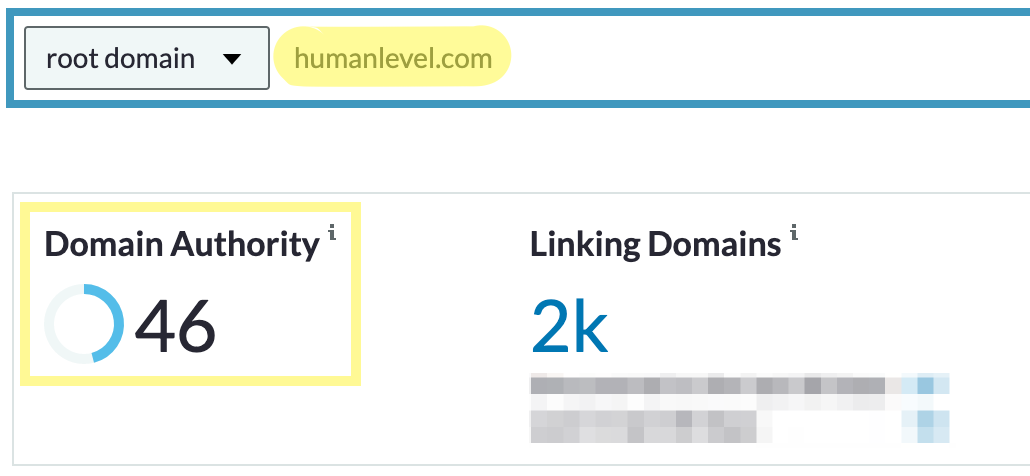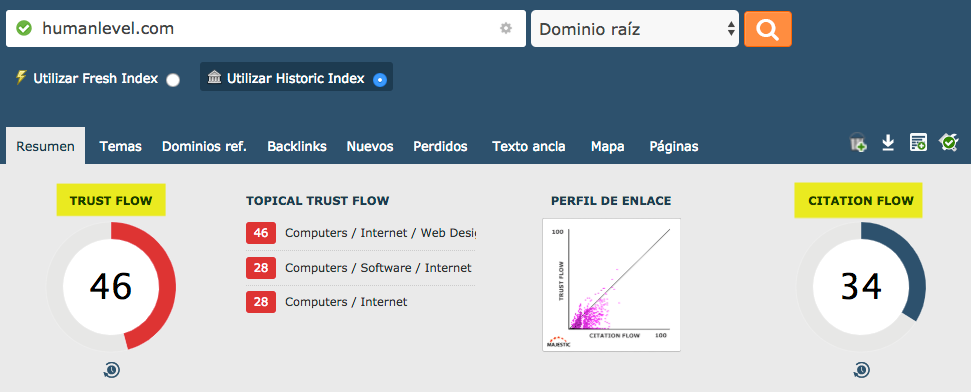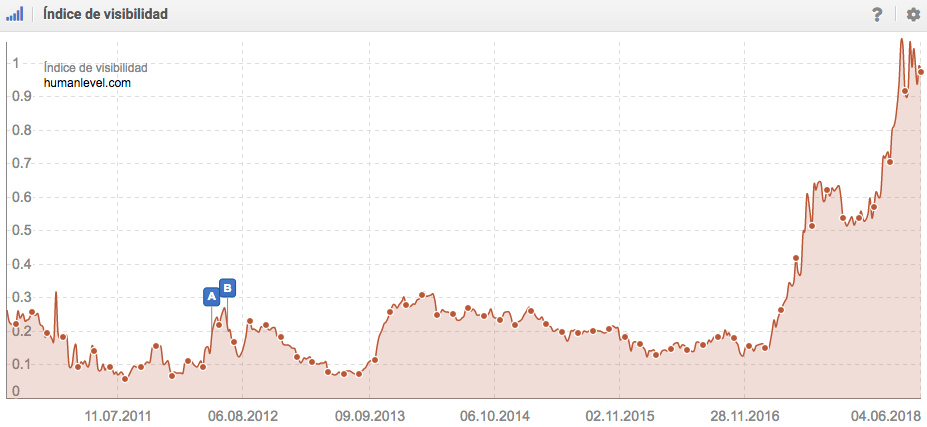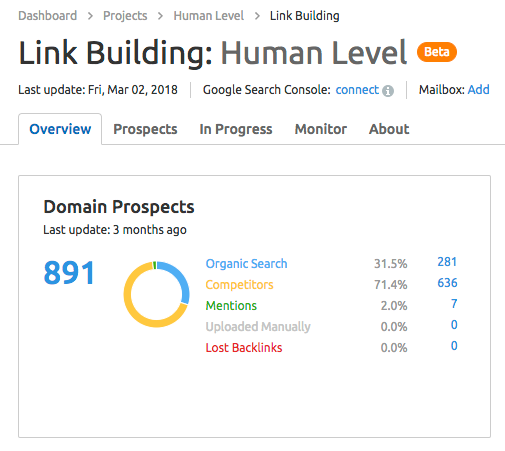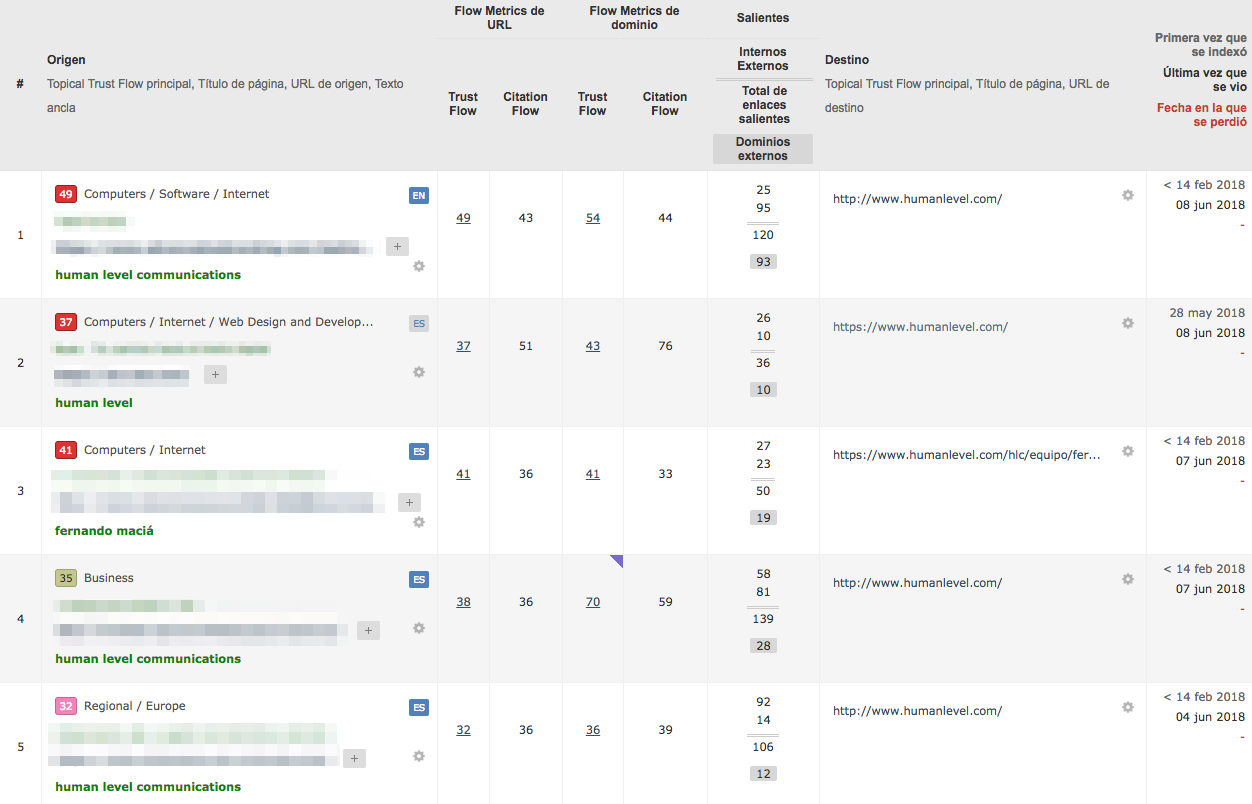Written by Anastasia Kurmakaeva
Index
The off-page optimization of a website includes several techniques that, as the name suggests, focus on improving the SEO at the level of popularity and authority of a portal. Among them are social media marketing, influencer marketing, guest blogging, strategies to create and enhance branding, etc.
Link building is undoubtedly one of the most effective and important off-page optimization strategies, but it is also, perhaps, the trickiest and has the most complicated track record in the world of SEO.
I have talked on multiple occasions about link building, focusing mostly on how to build a cleaner and more natural backlink profile for a website. In this post, however, I would like to delve a little deeper into aspects such as indicators to take into account to measure the quality and authority of a domain, or ideas on how to search for websites where we could request links to our own portal, as well as typologies that are more related to our sector. As you already know, it is important that there is a certain correspondence between the content from which we link and the content of the page that receives the link. Otherwise, the search engine algorithms might think that there is something fishy going on with our site, and that is the last thing we want to convey to them!
Indicators and tools for measuring domain quality
There are several indicators provided by SEO tools such as Majestic, Moz’s Link Explorer or Sistrix with very interesting information about a website, which we can (and should) take into account when selecting candidate sites in which we would like to appear linked. Let’s take a look at them.
Domain Authority
Domain Authority (DA) is an indicator provided by the Link Explorer tool, which scores a domain from 0 to 100. While this is a reliable signal, it is important to view this assessment in perspective, and in conjunction with other indicators.
A reputable media such as El País or El Mundo gets a much higher score, because you cannot compare the authority of a leading national digital media, with millions of links from all kinds of websites and social networks (not to mention the volume of daily traffic), with a smaller website that will never reach the same audience as a current affairs newspaper of that caliber.
It is therefore necessary to look at the framework in which we operate, as well as the sites that are related to us in terms of their subject matter. Normally, a DA from 30-35 can be considered as quite good. In any case, it is always important to contrast different types of indicators that we will see later in this post to establish if it is convenient to request a link to a domain or not.
Trust Flow and Citation Flow
The Trust Flow indicator of the Majestic tool serves the same purpose as the domain authority indicator developed by Moz. Its score also moves in the 0 to 100 range, and it is especially interesting to see it in combination with the Citation Flow.
- Trust Flow: indicates the number of clicks from a set of trusted sites to access a given URL or domain.
- Citation Flow: indicates the number of mentions made of a given URL or domain.
Ideally, we want the Trust Flow – both our own and that of other sites – to be higher than the Citation Flow. This is indicative that pages that receive links are frequently visited because they are relevant and because the linking site is trusted by its users, regardless of the number of mentions. If the Citation Flow is higher than the Trust Flow, it is likely that there are many links to a website, but these are not visited much, which, among other reasons, may mean that they are either not that relevant or interesting, or do not give users enough confidence to click on them.
Visibility index
The Sistrix visibility index is always interesting to study for many reasons, and not only for link building purposes. However, in this post we are going to focus only on the information it can give us about a website where we want to get a link.
The evolution of a website’s visibility must be seen in the medium to long term. We should not take very seriously the oscillations that may occur from one week to another, neither in positive nor in negative, since it is normal that it fluctuates with a certain regularity.
When analyzing domains for link acquisition, we are interested in a mostly positive evolution of these domains. If we observe that a domain has been trending downward for some time, it is better to go for one with a growing trendThe impact that a link from a declining domain will have on our own rankings will not be the same, and will probably bring us little or nothing. It can even be detrimental to us if the decrease in visibility of a website is the result of a penalty, although this would be the most extreme case.
Domains sharing IP or belonging to a black list
Getting numerous links on domains that share IP can be very suspicious in the eyes of Google, as it could be interpreted as a manipulative practice of trying to get popularity in an unnatural way through shady deals, because of that “think wrong and you’ll be right”.
It may also be the case that the IP of a domain that is of interest to us belongs to a blacklist, or that it shares IP with conflicting domains (spam, pornographic sites, etc.).
To be sure, and to avoid investing money in vain and hindering -at best- the development of the popularity profile of our website, we should check this data using tools such as:
- Spyonweb, to detect related domains by IP address.
- Hackertarget, to detect if a domain shares its IP with others.
- Majestic, in its“Neighbourhood checker” section, allows you to find out the IPneighbourhood of a domain.
If the domain we are targeting has a unique IP and does not share a neighborhood with problematic sites, we can add another plus point to it and include it in our final selection.
Tools for link request site suggestions
Link building platforms
There are several tools such as Coobis, Leolytics, or Publisuites, among others, that help us to manage in a simpler and more automated way the search, selection and request of backlinks, in exchange for an additional percentage of the price for each sponsored link requested by the websites. If we are not limited by budget, it is a very convenient solution, since these tools have search engines and a powerful system for filtering portals by sector, domain authority, rates and other characteristics. This, added to the possibility of contracting links directly through their platforms, makes link building much easier, since it avoids having to:
- Search for domains using more complex and slower methods.
- Search for e-mail addresses of the web site managers, and manually contact each of them.
- Request half kit and/or rates to the sites of our interest.
- Manage the publication once the price of the link in sponsored content has been accepted.
However, it is not always the best solution, and having an unlimited budget for link building is not very common, especially if the website or online store in question is rather small in size.
Competition
Another interesting (and cheaper) option is to look at what our competitors are doing in terms of link building. How?
SEMRush Project Module
SEMRush, for example, has a projects module, where, among other tasks, we can track our popularity profile quite closely. But, in addition, we can see exactly where our competitors are getting links and we are not, with websites that by their subject matter and characteristics are also related to our content. This tool within the projects section is called Link Building, as it could not be otherwise. Although it is still a tool in BETA status and your selection is not always 100% accurate, it is worth a try, at the very least, to get ideas.
In the “Prospects” tab, we can see suggestions of where our competitors are linked to, and add potential candidates to a list, which we can later review at our leisure, and contact the ones we are most interested in.
Cognitive SEO
At Cognitive SEO we can analyze the backlinks received by your competitors’ websites. We will export the complete list and sort it based on domain influence from highest to lowest, in order to quickly discard those domains with a lower authority.
Majestic
In Majestic, in the backlinks section, we can perform the same analysis:
As in Majestic it is also not possible to sort the links directly in the tool interface, it is recommended to download the raw referral link data in an Excel or .csv file, and sort them in the spreadsheet by their Trust Flow.
Actually, we can use any tool that offers a history of backlinks, extract the data and sort them by the indicator equivalent to domain authority: Ahrefs, the previously mentioned Open Site Explorer, etc.
Types of sites and links
Depending on the sector to which our own website belongs, we must also look for the types of sites that best suit us. A solution that tends to be more common and that adapts relatively easily to any area of business is digital media. The reason? There is an infinite amount of generalist online media, current affairs, or specialized in specific topics, such as ICT, health, science, music, cinema, and a very long etcetera. I’m sure you can find more than one media related to your industry that will fit your website content like a glove.
The options of blogs and influential personalities in the sector are a similar option, but depending on the sector it may be more difficult to find the key. If we belong to very popular B2C sectors, such as fashion, technology, or food, for example, we will never have a problem finding personal and professional blogs to request to be linked in them. Obviously, this will not always be the case. However, a good knowledge of the industry in which we operate can take us a long way.
Other very interesting methods can be the sponsorship of events, collaborations, customer testimonials, links in forums… In the case of the first two, they usually involve a fairly large financial outlay, but they also provide us with greater visibility, which is beyond our reach if we opt for other types of backlinks. Participation in events can also provide us with referral links from the organization, but its “cache” -to call it somehow- is less than that of a sponsor.
Link characteristics
To be taken into account by Google and improve our rankings, the links we get should have certain special characteristics:
- Nofollow or dofollow links. If we want the link to transmit popularity, we should always opt for a dofollow link, since a nofollow link does not transmit measurable popularity for Google. It is true that it does not stop giving us visibility at user level, but search engines do not take into account nofollow links for the calculation of relevance, so they will not bring us anything in terms of positioning. It is important to point out that in the case of advertising links, such as banners, for example, the banners should always be nofollow so as not to risk being negatively affected. In the case of a banner, since it is a non-traceable link, it is irrelevant if keywords are included in its anchor text.
- Anchor text with or without keywords. When it comes to getting links it is always preferable to avoid using keywords in the anchor texts that lead to the home page of our site, since a high number of links optimized with keywords can be detected by Google as manipulative, especially if they are to the home page. Therefore, if the link directs the user to the home page, its anchor text should always be the domain itself (humanlevel.com) or the brand name, without further explanation (Human Level). In case of links leading to other internal pages or blog posts, we can opt for 1). branded anchor texts or anchor texts such as “click here”, “this link”, or “this post”.2) the headline of the article (in case it is a blog post) or 3) anchor texts with the keywords of the page to which the link is directed, provided that it is relevant and taking care that the number of these anchor texts does not exceed the number of neutral texts (described in point one) or brandedand are therefore a minority in proportion to other types. In the end, what this is all about is finding a balance between usability and optimization that is as natural as possible.
- Location on the page. Links that are replicated on all pages of the site, also known as sitewide linksare the most important in terms of relevance, but they are also the most delicate to manage, especially if they are reciprocal, since Google could detect them as fraudulent if the domain that provides the link and the domain that receives it have nothing in common. They are usually located in places such as the header, sidebar or footer, hence they appear on all pages. It is preferable to opt for unique links within the main content of a page, but if you have sitewide links, they should carry the rel=”nofollow” tag as long as they are for advertising purposes. In any case, as we have mentioned, they should not be our priority or our focus of attention when it comes to carrying out actions to improve the quality of our products and services. link buildingIt is difficult for this type of links to be granted in a natural way, and search engines know it, so at SEO level they do not offer us any kind of benefits.
Obviously, many of these characteristics are established by the sites that provide the links, so if we are not satisfied with their conditions, we have no choice but to choose another site that better suits our needs.
And remember:
The quality of the links should always take precedence over quantity. So, when it comes to searching and selecting domains for the development of link buildingIf you’re looking for the best options, take a good look at all the popularity indicators of the sites you’re targeting, and take note of what your competitors are doing, especially those that are doing the best.
